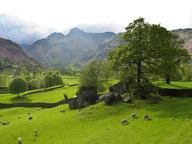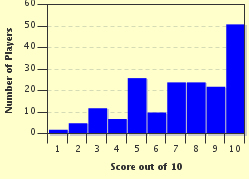Quiz Answer Key and Fun Facts
1. The county of Cumbria came into existence in 1974 due to an amalgamation of Cumberland, Westmorland and part of which other county?
2. What, specifically, would a peakbagger be looking for in the Lake District?
3. Cumbria contains both the largest lake in England and also England's highest mountains. The highest mountain of all is Scafell Pike. What is the second highest called?
4. Luguvalium is the Roman name for which city that serves as the administrative centre for the county?
5. I am eating gingerbread, looking at the grave of William Wordsworth. Where am I?
6. As well as the largest lake and the highest mountain, Cumbria also has the deepest lake. Which is it?
7. Why is Bassenthwaite Lake unique in the Lake District?
8. The site formerly known as Calder Hall is a major employer for the towns on Cumbria's coast. What is it now known as?
9. In which Lake District valley is Beatrix Potter's "The Tale of Mrs Tiggy Winkle" set?
10. On which Cumbrian lake was Donald Campbell killed whilst attempting to break the World Water Speed record?
Source: Author
colpeakbagger
This quiz was reviewed by FunTrivia editor
Pagiedamon before going online.
Any errors found in FunTrivia content are routinely corrected through our feedback system.

